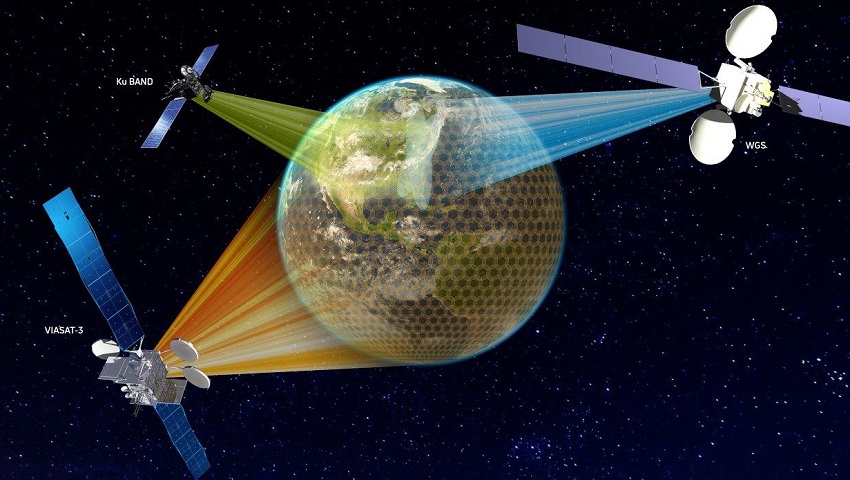Promoted by ViaSat
Global operations require global communications. For the Australian Defence Force (ADF), whose future commitments may extend across the Pacific and beyond, delivery of -- or at least access to -- a reliable global communications network is a necessity.
But it’s not that simple. Australian forces may be conducting security and peacekeeping operations in remote and undeveloped parts of the globe where economic conditions result in satellite communications (SATCOM) being very poor. Thus, even if connectivity can be established, it is unlikely to be sufficient to meet operational requirements. Modern warfare involves dispersed forces abruptly concentrating to achieve an operational outcome, which requires the ability to focus a massive amount of SATCOM bandwidth into a narrow area within minutes rather than current capabilities that would take days or weeks.
JP 9102, Australia’s next-generation satellite program, will have to address these challenges and more. How much capacity is needed when long periods of quiet will be interrupted by sudden surges in demand? Will the ADF enjoy communications resistant to jamming and cyberattack? These are some of the flexibility and resilience attributes desired by JP 9102, and are broadly described in the project requirements. But the most important question is this: how will Australia be able to afford the constant innovation and effort needed to maintain cutting-edge SATCOM, when technology in that sector is constantly evolving with improved performance and enhanced defence against continually escalating cyber threats?
The traditional solution to achieve desired sovereignty is for governments to build their own sovereign satellite networks. But such programs take years – if not decades – to come to fruition. By then, the original technology has become obsolete, the government has invested heavily in equipment and infrastructure, and it finds itself locked into a contract with a single vendor operating on obsolete networking technology.
“In the traditional acquisition model, somebody in the industry is awarded a prime contract,” says Ken Peterman, president of Government Systems at Viasat, a satellite communications company with a strong presence in both the defence and commercial sectors. “Now they spend several years developing products and systems, and several more years deploying the capability. Now we're 5 to 10 years in, the customer is just starting to utilize the system and its already two to three technology generations obsolete.”
Viasat has pioneered a more promising alternative. Called hybrid adaptive networking (HAN), this approach allows users to seamlessly switch between government and commercial networks, depending on whichever system offers the best capacity, economics and performance envelope at the time. The U.S. government has already embraced HAN to the point where senior U.S. government leaders rely on adaptive networking to maintain communications while airborne.
Peterman compares HAN to commercial mobile phone plans. Consumers don’t have to waste time locating the optimum network or cellular tower in their area: their mobile service provider handles all that. The mobile phone user is usually completely unaware of what tower their phone is connected to and which network provider owns that tower. In the competitive and fast-changing commercial SATCOM market, providers are also expected to offer the latest technology, or risk losing their customers. This effectively ensures that consumers are always provided with the best available technology and service performance throughout the life of their phone and service contract, without the need for additional investment themselves.
“In our market segments, that technology is reinventing itself every 18 to 24 months,” Peterman says.
To the Australian government, HAN would be a particularly attractive option. Viasat, for example, offers global Ka- and Ku-band satellite service that is constantly being improved and refreshed. Being able to access that Viasat capability would be invaluable to ADF users – whether aircraft, ships or ground troops – wherever they are, including expeditionary and peacekeeping operations in remote areas.
HAN can also accommodate capacity density by concentrating capacity into a narrow footprint on demand. For example, the new ViaSat-3 satellite constellation uses thousands of small-diameter beams that can be shaped and positioned to saturate an area and provide massive bandwidth availability in real time. This beam architecture also makes the system highly resistant to jamming.
HAN embraces all available networks including commercial and defence broadband SATCOM, narrowband SATCOM, line-of-sight networking and tactical data links. By achieving connectivity at the network layer, HAN is also able to embrace satellites in all orbits, GEO, MEO and LEO, bringing together these disparate networks into a holistic enterprise architecture, and facilitates interoperability between different platforms. Indeed, with interoperability so vital to coalition operations, HAN integrates seamlessly with Link 16 and the more than 15,000 platforms that use that tactical networking system. This was one reason why Lockheed Martin has opted for Viasat tactical data links for its Long-Range Anti-Ship Missile (LRASM), which Australia is acquiring.
HAN would also offer a great mechanism to boost the Australian defence industry, enabling local provision of vital components such as terminals and network management services across these disparate technologies and networks.
Most important, HAN would allow Australia to enjoy the best of both worlds. The government can retain sovereignty over important national security communications, yet still take advantage of the latest technological advances in the commercial SATCOM market.







